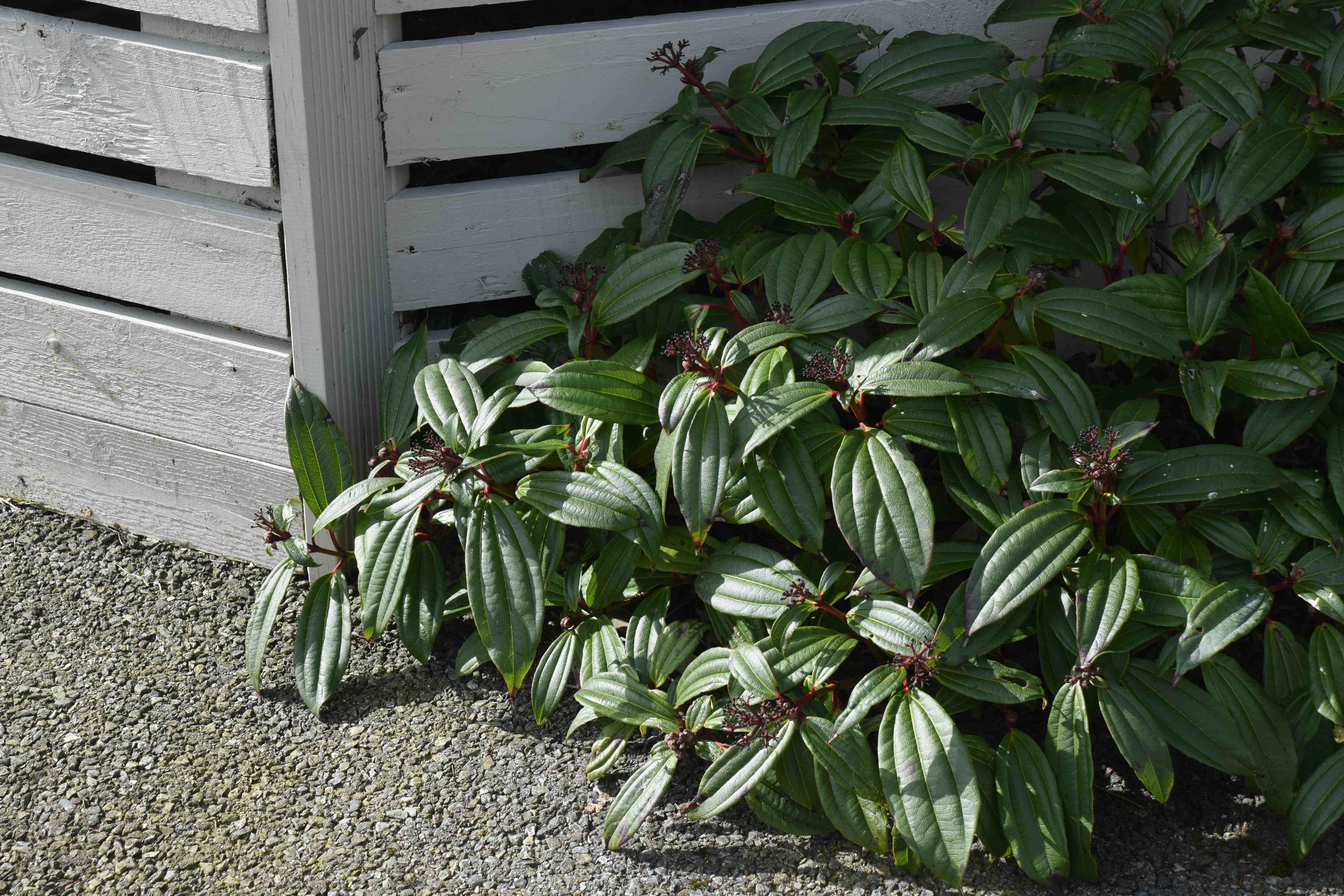
As we enter autumn, it is time to think about planting. In recent years we have tended to forget that autumn is the perfect time for planting and we buy and plant shrubs all year round. But, as we found this summer, it can be difficult to keep newly planted shrubs watered so they get established. Autumn planting is much more in tune with nature and if we plant now, while the soil is moist, and will stay moist till next summer, the plants have a chance to put down roots before the stresses of summer.
Shrubs are great value in the garden, most lasting for decades, and there is a wonderful selection. Viburnums don’t always get the attention they deserve, perhaps because they are at the end of the alphabet! They include evergreen and deciduous shrubs and although their flowers are small, they are usually produced in large numbers so they can be quite showy. Some, but not all, are deliciously fragrant and some have attractive berries. Every garden needs at least one viburnum and two would be in my top ten shrubs!
Firstly, there is Viburnum davidii (top photo). This is a low, spreading, stiff shrub with glossy, deeply veined, evergreen foliage. The small white flowers are rather unexciting and the metallic blue berries are not always freely produced, though when they are, they are superb. This is most useful as dense ground cover in part shade though it will grow in sun and shade too. To be honest, it is useful rather than heart-stopping, but most gardens need some plants like that and it is why I planted one.
Another evergreen, and one that IS in my top ten list, is Viburnum tinus.
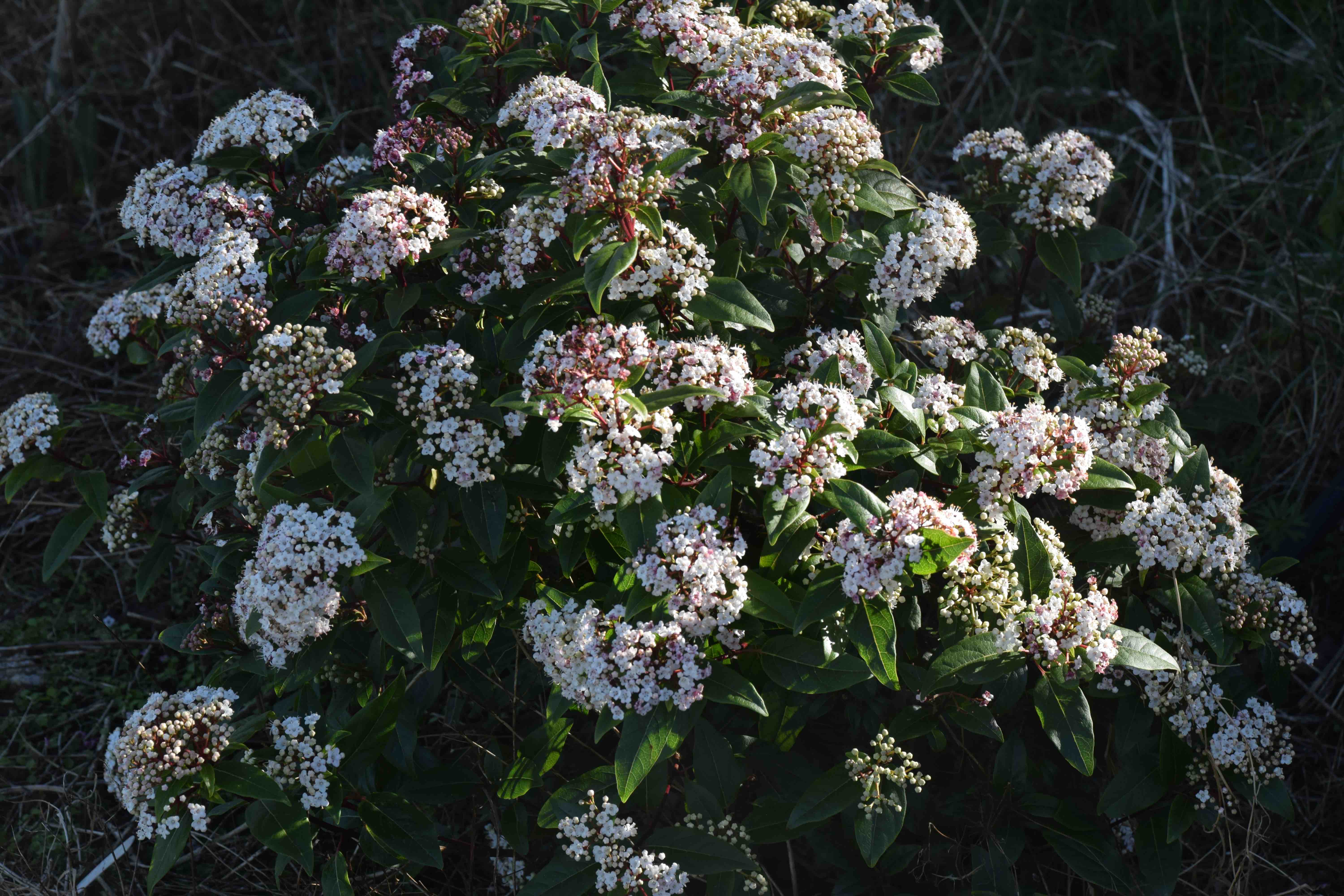
This Mediterranean shrub is hardy and will grow in part shade or sun. Because it is mild in winter where it grows wild, it has the curious habit of producing its red flowers buds in late summer and these can open from autumn to spring. Although the leaves are rather sombre, the flowers are welcome in the colder months though they are not attractively fragrant. There are many varieties, all variations with paler or darker buds and white or pink flowers. Most grow moderately fast and will be about 1m high in five years and will top-out at 1.5m. It can be used as a hedge, useful in part shade, but it cannot be clipped into a narrow hedge and you should allow a mature width of 1m.
One other evergreen that deserves a mention is Viburnum odoratissimum ‘Coppertop’. This is a new variety, destined for great things. It has fragrant flowers in spring but its main feature is the new growth that is orange/red. It matures to glossy green. I planted it as soon as I found one and I think it will make a good alternative to photinia ‘Red Robin’ which can be rather straggly.
Fragrance is the main reason to grow viburnum ‘Dawn’, though the small, pink flowers are also showy because they are produced from November to March on the leafless branches. Not only would this make it into my top ten shrubs, I would make it No1.
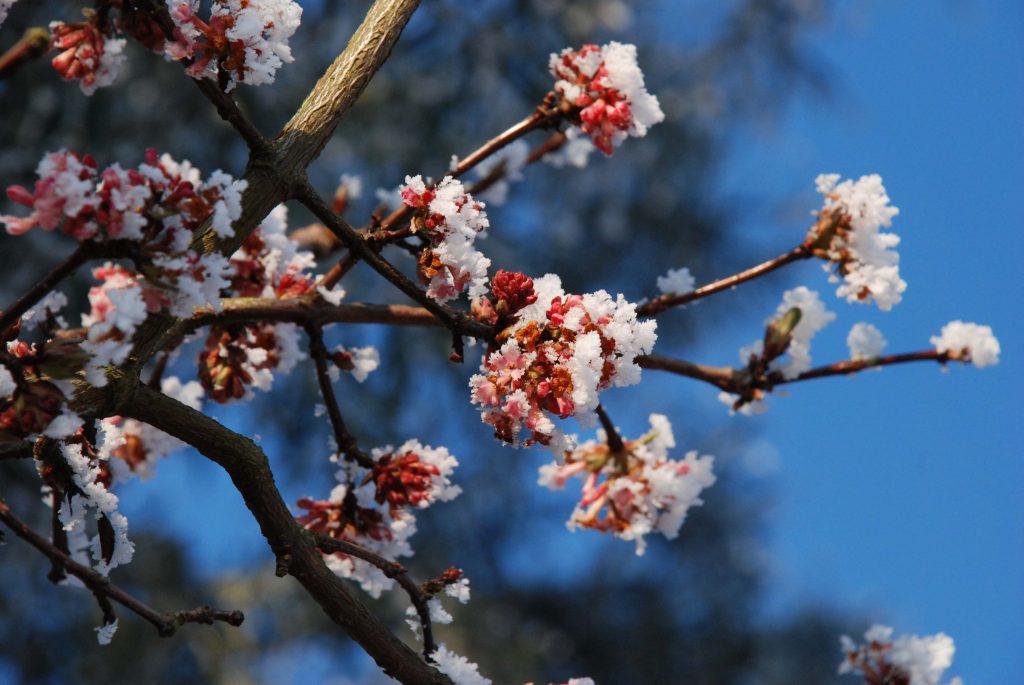
When young, this is a narrow, upright shrub but it does spread with age. The foliage is neat and often turns purple in autumn, as the first flowers open. The buds are deep pink and open to pale pink flowers. The open blooms are damaged by hard frost but buds are not affected. Flowers open from autumn to spring, in mild spells, and have a lovely fragrance. It is best in full sun but will also grow in part shade. Although it can ultimately grow 3m high and wide, with arching stems, it can be kept to a neat shrub 2.4m x 1.5m easily if a few of the oldest stems are cut out every few years. It goes without saying that this was one of the first shrubs I planted.
Fragrance is the reason to grow another section of the viburnums, all with domed heads of white flowers. Viburnum carlesii is possibly the best, with pink buds and white flowers but the easiest to grow, and also partially evergreen, is Viburnum x burkwoodii. This is a vigorous shrub about 1.5m high and wide with white, fragrant blooms in April and May. It is another addition to my garden.
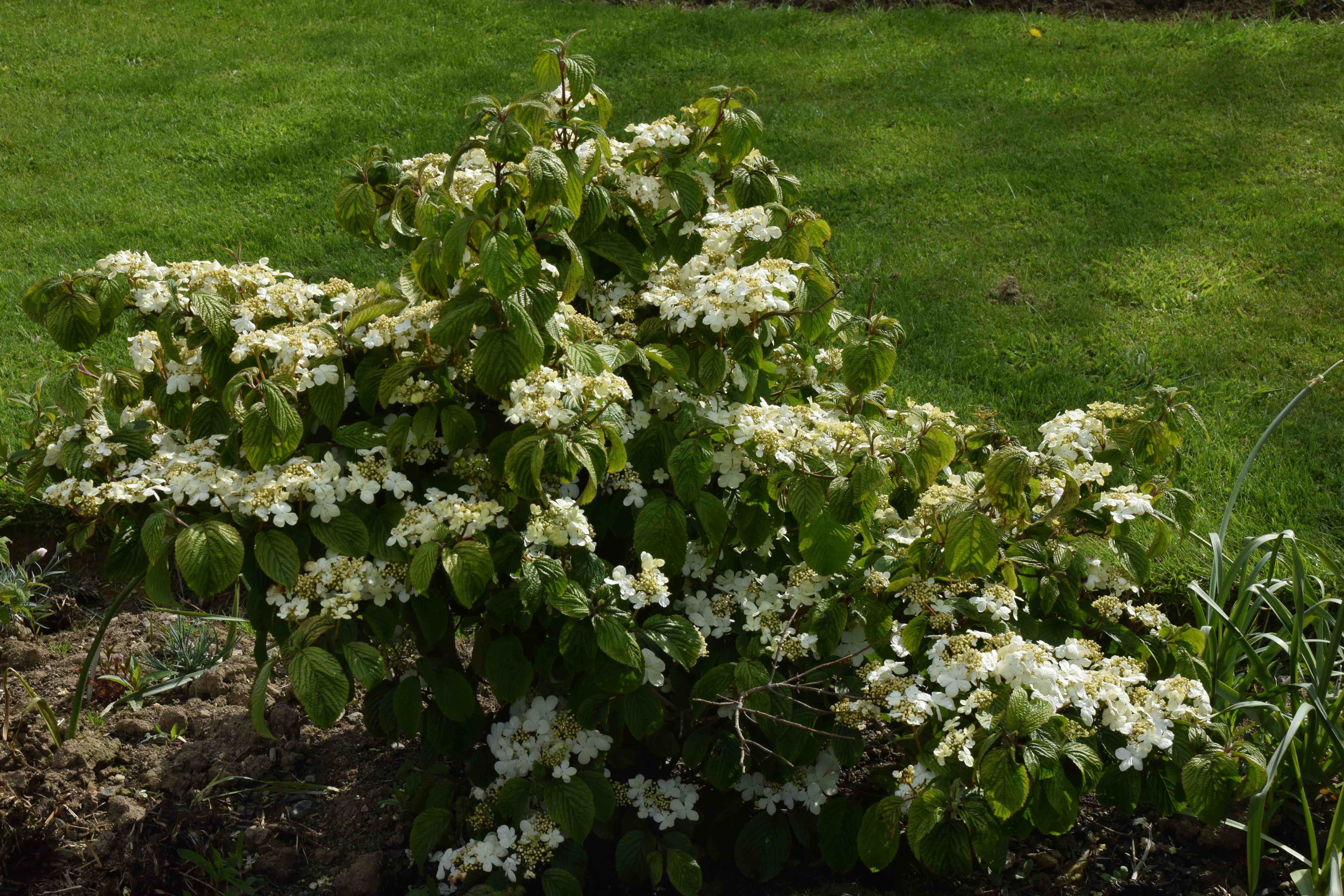
Most viburnums don’t dazzle when in bloom but the many kinds of Viburnum plicatum are spectacular. They are large shrubs with layers of horizontal branches and in late spring are covered in clusters of white flowers. The many varieties vary slightly but some have rounded clusters of flowers rather than flat heads. The best of these is ‘Popcorn’ which is also more upright than most and the best for a small garden. Most viburnums are not fussy about soil but these all prefer an acid soil.
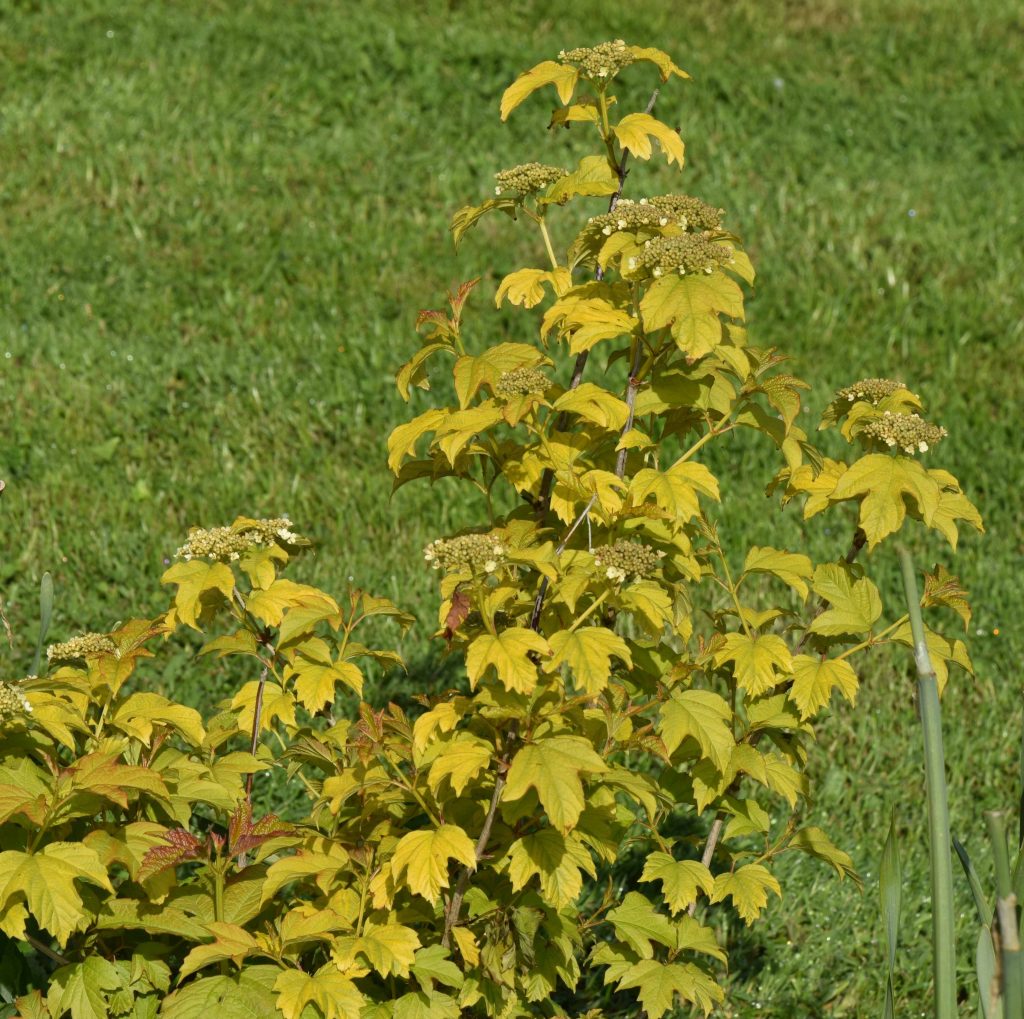
Perhaps the easiest to grow is the native Viburnum opulus. This is a large shrubs that can be trained as a small tree, if required. It has clusters of white flowers and showy, translucent red berries in late summer and the leaves turn red in autumn before dropping. If it is a little plain, choose the yellow-leaved ‘Aureus’ which is bright all summer but needs a little shade to prevent the leaves from scorching. The most popular is the ‘double’ form called ‘Roseum’, often called the snowball bush. The flower clusters start lime green and open to white but it does not produce fruits.
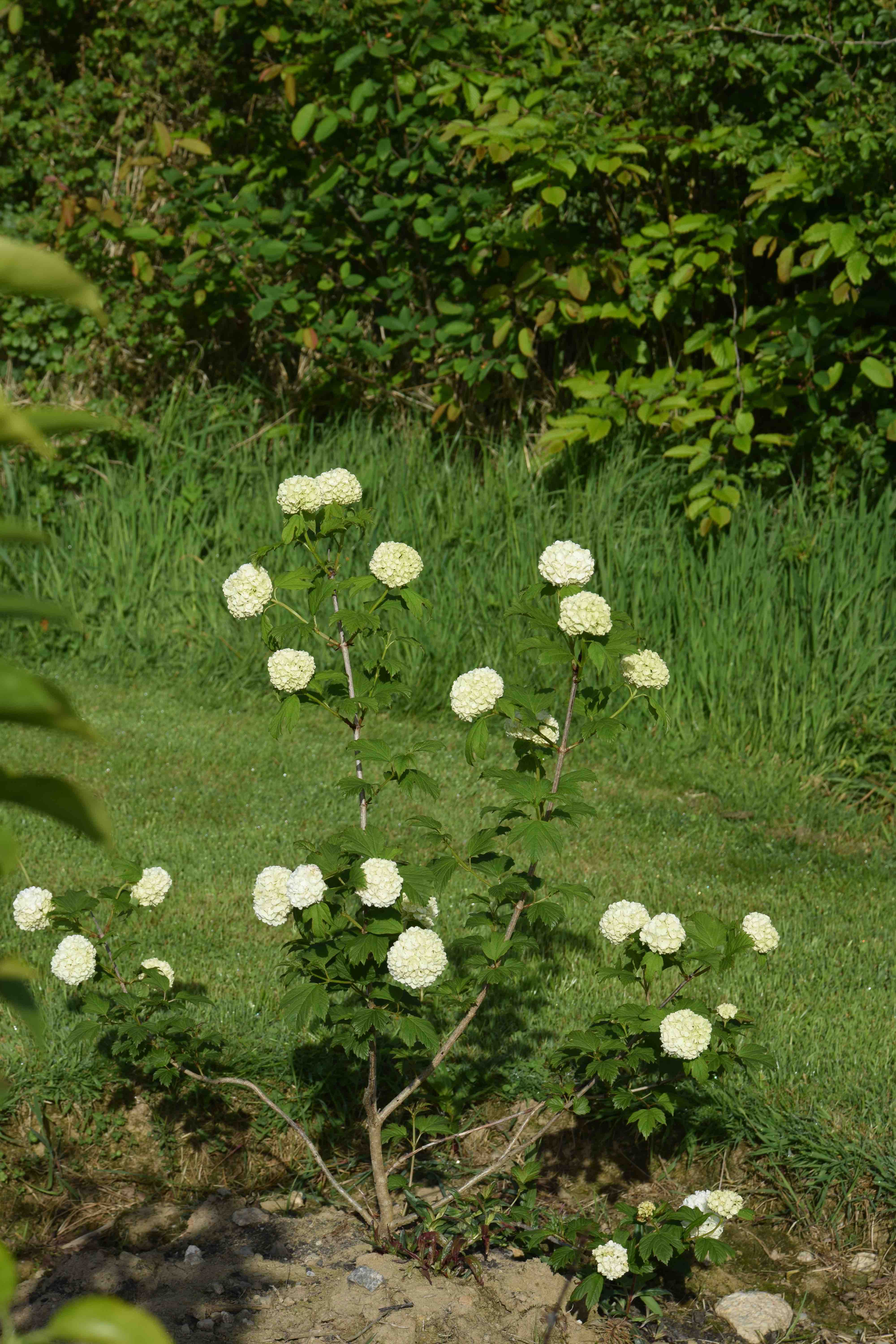
All these plants are in my garden and I will be adding more viburnums over the years. They are easy to grow and rewarding with colour all year round.